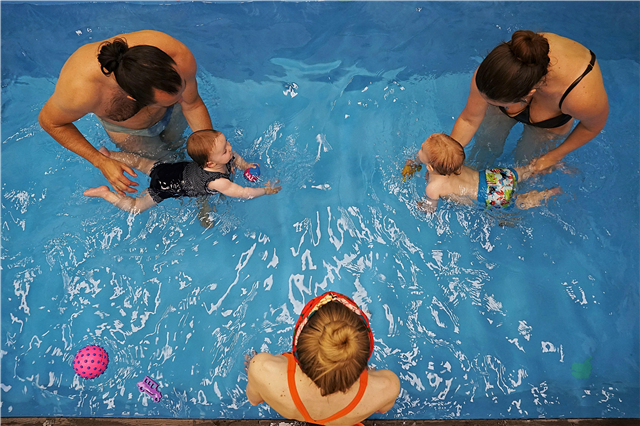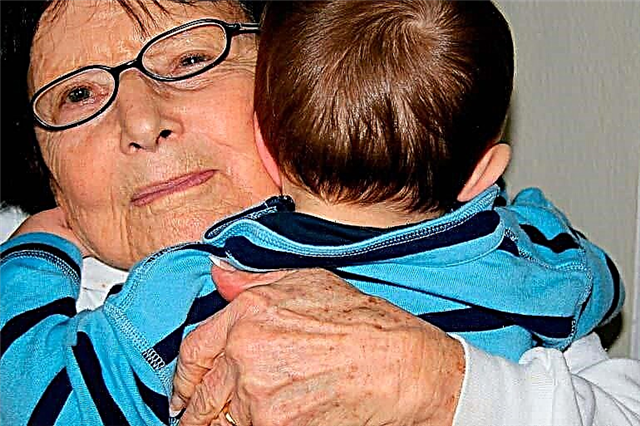
Children's sand games have long been recognized by child development experts as not just a pointless waste of time, but a real developmental exercise that allows you to learn about the world around you and train fine motor skills of your hands. For parents, buying a sandbox for their personal plot is also interesting because it is a great way to keep the child busy for a few hours while doing their own thing. Another thing is that before making a purchase, you need to at least a little delve into the topic, which we will now do.

Characteristic
Plastic children's sandbox in recent years it has been considered the optimal choice for those parents who want their children to have constant access to sand and a choice of friends. It is plastic products that are considered the most practical and effective today, for a number of reasonable reasons.
Primarily, modern plastic has become a safe material - its best samples do not emit toxic fumes even at strong heating, and still do not ignite at fairly high temperatures - with a typical location surrounded by completely non-combustible sand, this makes them safe.
At the same time, it should be understood that on the market, especially in the segment of inexpensive products, there are also samples of not very high-quality plastic, therefore it is desirable from the manufacturer to demonstrate Russian certificates proving that there are no contraindications to use by people (and children in particular).


In addition, today plastic can show itself very durable material, which is difficult to break or even scratch, even with targeted exposure. This is good news, because a sandbox made of such material cannot be broken by children and will last longer, and sharp burrs will definitely not appear on the surface of the sides. The caveats here are the same as in the previous paragraph - in inexpensive models the plastic can be thin and of poor quality, then these positive features do not concern it.
Of other important points, it is worth highlighting the colorfulness of the material. - a bright sandbox will undoubtedly appeal to children more than a nondescript one. The material, which is malleable in a molten state, allows casting of any decorative forms, while the dye is not on the surface, but in the thickness of the material, so that the paint on the sandbox will not wipe off. Finally, the advantages of such a product do not affect its cost in a destructive way, because the product remains available to a wide range of potential consumers.
Kinds
In pursuit of buyer's attention, manufacturers are ready to release different types of sandboxesthat captivate with an unprecedented level of practicality. Consider a few solutions that today are no longer even considered curiosities.
The real hit is the portable models. The design allows you to move it freely, having previously poured sand from the inside. Such a solution is convenient if the family wants the child to be always in front of their eyes, or the family often moves, having the ability to transport the projectile in their own car. Large models of this type are usually made collapsible to fit in the trunk or closet, where they are hidden for the winter.


Prefabricated structure possible in another case, for example, when the product is manufactured in a modular design. Thanks to this, the product can be produced in a set with the same slide. It is not necessary to buy a foldable design as a whole if parents do not see the need for the whole set or can not afford it yet. Again, the missing details can be bought later, gradually upsetting the playground so that it more and more resembles a dream from a fairy tale.

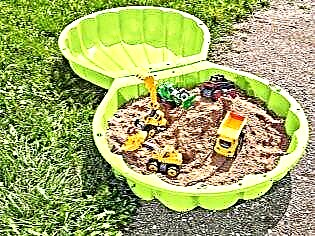
Considerable attention is paid today to convenience and safety... Many toddlers want to play in the sandbox all day, regardless of the bright sun or rain. Manufacturers provide such an opportunity by equipping the structure roof... It can be performed in different ways, from the classic fungus, familiar to everyone since kindergarten, to "booths" on the territory, imitating either the deck of a ship, or the cabin of a truck (with a sandbox in the "back"), or a rocket aimed at the sky.
As has already become clear from the above, the exercise area with sand can complemented by a slide or decorative locations... The latter are often equipped with ladders and primitive horizontal bars, allowing kids to engage in more active games. For those who are tired and want to sit, in many modern sandboxes there are benches along the sides.
Taking care of the cleanliness of the sand and proper hygiene of the games, manufacturers began to equip sandboxes with tight lids. During the absence of the child, neither animals nor birds have access to the playing equipment, in addition, the cover will not allow the sand to be carried by the wind.
Shapes and sizes
If we talk about the shape of the sandbox, then this is more an aesthetic moment than a practical one. In theory, we can argue that fewer sharp corners reduce the likelihood of injury, because round model is better than squarebut how much safer it really is is the question.


Many modern slides have a shape that is not described by geometric concepts - this design imitates the same car, boat or chamomile flower. Manufacturers try to arrange the design so that the kid, being inside the sandbox or next to it, understands what “location” he is in.

Less successful solutions, in the form of the same flower, can be assessed from the point of view of beauty only from the window of a multi-storey building. As for the sizes, they can be absolutely any, depending on how many children playing at the same time the model is designed for. There are also very small sandboxes on sale, for some reason designed for one child, and larger ones, allowing brothers and sisters to play or invite one or two friends.
Truly large sandboxes are made to order, they are usually not available for sale.
Selection rules
When deciding on the choice of model, first of all think about the needs of the children. Start from how many of them will be played, try to provide everyone at least one and a half to two square meters of space. If you know that your baby is sociable and has many friends, it is better not for him to buy a small sandbox - not having the opportunity to play here with friends, the child may simply ignore the gift. But to the dacha, where adults and children are not so long, where there are no other kids, it makes no sense to take a large model.


Determined by the shape and appearance, give preference to those sandboxes that should correspond to the interest of your child. Girls usually love flowers, any chamomile will delight them, but a little pirate for sincere delight definitely needs a ship or, at worst, a car. Remember that playing with sand has a developmental effect, so you yourself are interested in making your baby enjoy being in the sandbox.


The recommended height of fences for all sandboxes is determined approximately the same - it is equal to 20-25 cmbecause this is the barrier that a child of any age can overcome. With the height of fungi and any other overhanging structures, it is a little more difficult - if this is a shelter from the rain, it should not be too high in order to protect it from slanting precipitation, but it cannot be too low, otherwise someone will definitely hit his head.

Having personally visited the store to purchase the product, examine it carefully from all sides and be picky. Evaluate the strength and reliability of the plastic, be sure to inspect all the sides and make sure that there are no traumatic burrs and notches anywhere. Do not be lazy to ask the seller to demonstrate safety certificates, proving that the plastic used in the production is not toxic.
Be sure to choose from several options, without stopping at the first thing you see.
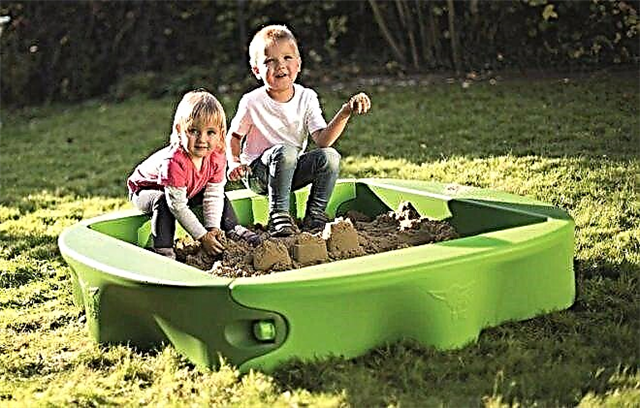
How to care?
Unlike many other materials, plastic does not fade in the sun and does not lose paint as a result of peeling, it is not interesting to pests and is not susceptible to mold. This may lead parents to think that maintenance of the sandbox is not required, which will be a common mistake - even if the frame does not need maintenance, but it is necessary to monitor the sand! The frame itself, if it is collapsible, with each disassembly should be washed with warm water. All connections should be checked for strength before reassembly, especially if the structure includes tall parts that can be climbed.

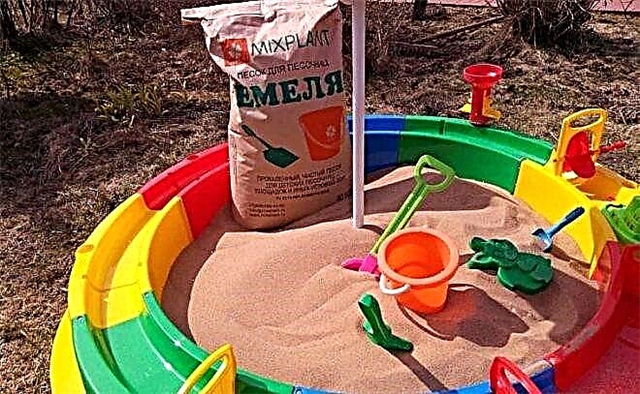
Even if you have purchased a sandbox with a secure lid, you should not assume that the sand is filled only once and for all - you cannot treat your own child that way.
- some of the sand still slowly disappears outside the sides - the wind carries away the sand while the child is playing, also individual grains of sand stick to hands, shoes and clothes, and are carried home bit by bit. Therefore, in any case, it will be necessary to fill up the sand periodically, but we will not name the exact dates - judge for yourself by the rate of decrease in its amount.
- sand needs regular cleaning, which is recommended at least once every six months. You need to understand that animals can get inside the perimeter if the kid himself, playing inside, pulls them there. Leaves falling from trees, branches brought by children themselves can also be inside. Finally, sharp pieces of plastic often remain in the sand structure, which can then be cut into.
Parents should periodically check for such foreign bodies and remove them immediately. Even if you keep the order very carefully, this does not negate the periodic sifting and washing of the sand.
The following video provides a quick overview of plastic sandboxes.


